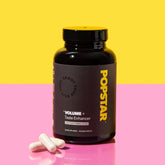Male Squirting is a term used to describe a phenomenon in which a man releases a fluid that is distinct from typical ejaculate, often associated with intense pleasure and unique pelvic sensations. While discussions around male squirting remain relatively rare and sometimes controversial, a growing number of men have started to explore this topic as part of their sexual and reproductive health. In this article, we aim to highlight the current understanding of male squirting, address frequently asked questions, and offer insights that balance medical, physiological, and personal perspectives.
Table of Contents
- Definition and Meaning
- Physiology of Male Squirting
- Differences from Typical Ejaculation
- Potential Benefits and Considerations
- Myths and Misconceptions
- Frequently Asked Questions
- References
Definition and Meaning
Male squirting is not a commonly used medical term, and it lacks rigorous scientific classification. However, the phrase generally describes an intense fluid release from the urethra that may occur before, during, or after orgasm, and which is perceived differently from standard ejaculation. In many cases, individuals who report ‘male squirting’ describe it as a sudden gush of fluid, often produced under heightened arousal. This fluid is typically clearer and may be produced in tandem with, or separate from, semen.
The concept is closely tied to the understanding of prostate fluid and how stimulation of specific areas (such as the prostate, perineum, or pelvic floor muscles) might lead to unusual secretions. Though there is no consensus in the medical community on the precise origins of the fluid, many professionals suggest that it could be a combination of prostate fluid, pre-ejaculate, or even fluid from the Cowper’s glands. Even so, more research is needed to fully characterize the makeup and mechanism of this phenomenon.
In a broader cultural sense, the exploration of male squirting has taken place in online forums, anecdotal testimonials, and some alternative health circles, where men discuss sexual satisfaction, intimacy, and ways of enhancing pleasure. From a men’s health perspective, any bodily function that intersects with sexual well-being deserves thoughtful consideration, especially if it influences self-image, relationship dynamics, and personal comfort.
Physiology of Male Squirting
While research on male squirting is limited, it is generally linked to the prostate gland, which is a significant organ in the male reproductive system. The prostate is situated just below the bladder and in front of the rectum, encircling part of the urethra. Prostate fluid is a crucial component of semen, providing enzymes, minerals, and other nutrients that support sperm health. In the case of male squirting, some theorize that the fluid released may be mostly prostate fluid combined with trace amounts of sperm or other secretions from neighboring glands.
During intense sexual arousal, blood flow to the pelvic region increases substantially. The pelvic floor muscles, particularly those around the prostate and the base of the penis, become more engorged or tense. If specialized stimulation is applied, often in the form of prostate massage, manual manipulation, or certain forms of penetrative intimacy, the prostate may release additional fluid. This can coincide with a strong urge to expel fluid, leading to what some describe as a spontaneous, forceful release.
Additionally, men’s sexual response can involve myriad factors, ranging from hormonal balance and psychological readiness to nerve sensitivity. Neurotransmitters, such as dopamine and oxytocin, can facilitate relaxation, natural lubrication, and heightened arousal—all of which may influence whether or not male squirting occurs. Genes, overall health, and the presence of any underlying conditions can also play a part.
Interestingly, some men report that they experience a less forceful or different type of muscle contraction during squirting episodes, compared to regular ejaculation. These contractions may involve more delicate rhythmic waves in the perineal muscles, timed in a way that facilitates a release akin to squirting rather than producing a thick, conventional ejaculate.
Differences from Typical Ejaculation
The most significant difference often noted by men is the fluid’s appearance, consistency, and volume. Whereas typical semen looks white or cloudy and has a thicker consistency, the fluid produced during male squirting may be clearer or slightly milky, but noticeably thinner. The volume can vary widely, from just a few drops to a more substantial gush. Some men describe feeling a strong pressure in the prostate region, followed by a sudden release that is more akin to squirting rather than spurting or throbbing, as with normal ejaculation.
- Fluid Origin: Conventional ejaculate primarily comes from the prostate and seminal vesicles, mixed with sperm from the testes. Male squirting fluid may arise from the prostate and other glands, but in different proportions.
- Consistency: Standard ejaculate is usually thicker and more opaque. Squirting fluid is often thinner and may have a reduced sperm count.
- Muscular Contractions: Traditional ejaculation involves strong, pulsating contractions of the pelvic floor muscles, whereas male squirting may involve subtler, drawn-out contractions.
- Sensations: Many men report that male squirting feels more like a release of pressure rather than the typical surging or pulsing sensations associated with ejaculating.
Another key differentiation is psychological and emotional. Some individuals find male squirting to be accompanied by a deeper sense of relaxation, possibly because prostate stimulation often triggers pleasurable responses that men may not experience with standard ejaculation. Nonetheless, for others, it may feel like a novel curiosity rather than a peak sexual experience, underlining the subjective nature of sexual encounters.
Potential Benefits and Considerations
Understanding male squirting can provide various potential advantages, including a new avenue for sexual exploration, acute self-awareness of the body, and possibly improved prostate health if approached with caution. However, perspective is vital. What works for one man may not appeal to another, and there is no obligatory reason to pursue male squirting if it is not of personal interest.
Exploration and Pleasure: Men who experiment with prostate stimulation or other types of extended arousal may discover new forms of pleasure that enhance intimacy. This can open up conversations about sexual wellness, communication with partners, and the significance of taking a holistic view of one’s sexuality.
Emotional and Psychological Well-being: For some, the novelty of experiencing a form of release that differs from standard ejaculation can foster positive self-image and a sense of sexual empowerment. It may also help individuals better understand how their bodies respond to different stimuli, leading to more confidence and potentially lower stress levels. That said, it is important to maintain a balanced view and avoid assuming that male squirting is a universal objective for male sexual satisfaction.
Potential Risks: While there are no widely documented significant health risks strictly tied to male squirting, any sexual practice can lead to discomfort if approached improperly or aggressively. Overly vigorous attempts to stimulate the prostate can cause pain, injury to the rectal lining, or undue strain on the pelvic floor muscles. Men who have pre-existing prostate conditions (e.g., prostatitis, benign prostatic hyperplasia) should be mindful and consult with a healthcare professional if they experience discomfort or persistent urinary changes.
Hygiene and Preparedness: As with any sexual activity, cleanliness is paramount. When exploring this phenomenon, it can be beneficial to empty the bladder beforehand and maintain adequate lubrication. Communication with any sexual partner(s) is also key; some men prefer to experiment solo first to understand the sensations before incorporating partners.
Myths and Misconceptions
Because of the private nature of male squirting, myths and misconceptions abound. Some popular myths include the assumption that squirting fluid is simply urine, that it is universally achievable for all men, or that it automatically signals a higher sexual prowess. While anecdotal accounts indicate that fluid may sometimes contain trace amounts of urine, that is not unlike other forms of sexual wetness. Furthermore, each male body is distinct, so not everyone can or wants to experience it.
Another misconception is that male squirting must happen through intense or extreme stimulation. In reality, a broad array of experiences have been reported, including subtle, gentle pressure on the prostate region or unexpected fluid release during typical arousal without overtly targeting the prostate. Some men also worry that if they release fluid that is not the standard thick semen, they may have a medical problem. This is rarely the case, although any persistent changes in color, consistency, smell, or frequency of fluid discharge should be evaluated by a healthcare provider to rule out infection or other concerns.
Lastly, cultural taboos or lack of open discourse about men’s sexual health can perpetuate misinformation. In some regions, there might be stigma attached to discussing or practicing prostate stimulation, leading to confusion and shame. By shedding light on the facts and highlighting the range of men’s sexual expressions, these myths can be clarified in a more accepting, educated way.
Frequently Asked Questions
What is the fluid released during male squirting?
The fluid often appears to be a mix of prostate fluid and trace elements of seminal and pre-ejaculate fluids. It is typically thinner and sometimes clearer than conventional semen. Because research is limited, exact composition can differ among individuals, and the experience itself can vary.
Is it urine?
Studies on related topics suggest that traces of urine can be present in squirting fluid; however, the consistency, odor, and general composition can differ from urine. In many cases, it is believed that the fluid originates predominantly from the prostate while containing minimal urinary content. Still, emptying the bladder prior to sexual activity may reduce confusion or concerns.
Is male squirting common?
There are no comprehensive statistics on how widespread it is, partly because men’s sexual health discussions around squirting remain underreported. Some men may experience it sporadically or unexpectedly, while others never encounter it. Culturally, reticence to discuss intimate matters can contribute to underestimation.
Can any man learn to do it?
Male squirting is not necessarily a skill that can be learned in a straightforward manner; it seems highly dependent on individual biology, prostate sensitivity, and comfort with certain forms of stimulation. While many men can explore techniques involving relaxed breathing, pelvic floor awareness, and communication with a partner, outcomes vary significantly.
Does it feel different from normal ejaculation?
Many men report a distinct sensation, more akin to a gentle, spreading warmth and a sense of pressure evacuation rather than the rhythmic pulsations observed in a typical orgasm and ejaculation. The factor of novelty may also heighten the perceived difference in sensations.
Is it safe?
There is no conclusive evidence that male squirting in itself is unsafe. As with any sexual activity, using proper hygiene, being mindful of pain or discomfort, and respecting one’s physical limits are essential steps. Men with underlying health conditions, particularly prostate-related issues, should consult a healthcare professional if they have concerns.
Are there any health benefits?
Although definitive scientific data are lacking, some men perceive physiological and psychological benefits such as stress relief, relaxation, or improved awareness of their sexual health. Prostate stimulation has also been linked anecdotally to potential benefits for prostate health; however, any claims should be verified by a medical professional as individual responses can differ widely.
Do I need a partner to experience it?
Partnered or solo exploration can potentially lead to male squirting, depending on comfort and anatomical responsiveness. Some men prefer self-exploration to understand their own bodies before involving a partner, while others find shared intimacy to be more beneficial for relaxation and experimentation.
Can male squirting affect fertility?
There is no evidence to suggest that squirting negatively or positively affects fertility. Fertility typically depends on the quality and quantity of sperm in the semen, hormone levels, and other factors. Since squirting events can contain very little sperm, they are generally regarded as separate from one’s usual fertility parameters.
How should I talk to my healthcare provider about this?
Openly discussing sexual health concerns with a qualified professional is the safest way to address any worries or questions. You might mention fluid differences, frequency, and associated sensations. A healthcare provider can help rule out prostate or urinary issues, ensuring everything is functioning well.
References
As male squirting remains an emerging and somewhat under-researched topic, formal studies are scarce. However, related scientific work on prostate fluid, men’s sexual response, and extended orgasmic experiences can be found in the following references and resources:
- Chughtai B, Forde JC, Iaquinta A, et al. Benign Prostatic Hyperplasia. Rev Urol. 2016; 18(1): 3-12.
- Shah J, Patel AV. Prostate Massage: History, Indications, and Contemporary Practice. Urology. 2020; 141: 4-11.
- O’Leary MP. Male Sexual Dysfunction: Overview of Epidemiology, Pathophysiology, and Treatment. J Sex Med. 2009; 6 Suppl 3: 5-9.
- McMahon CG. Ejaculatory Physiology and Pathophysiology. In: Sexual Health. 2017.
- Sedgh G, Singh S et al. Sexual and Reproductive Health: A Global Overview. Int J Sex Health. 2021.
For further information and direct personalized advice, consult your healthcare provider or a specialist in men’s sexual health.






















































